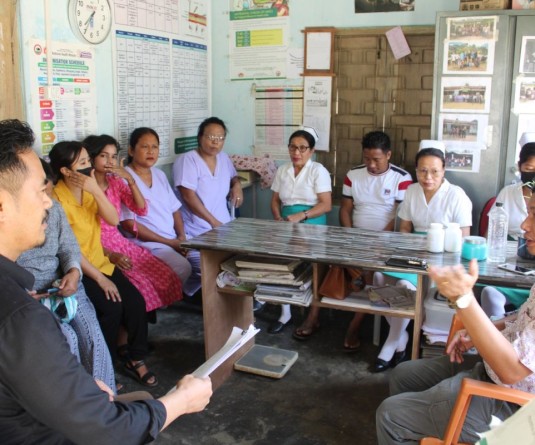
Nagaland at risk of ‘forest malaria’
Our Correspondent
Kohima | June 3
The Anti Malaria Month was launched today at the Health & Family Welfare (H&FW) Directorate Conference hall, Kohima by Commissioner and Secretary to the Government of Nagaland Health & Family Welfare Sentiyanger Imchen IAS.
Challenging the officials concerned to take advantage of the knowledge from the presentation on “anti malaria month programme” imparted by Regional Director, Imphal GoI, Dr. L.A. Singh, the Commissioner and Secretary urged the malaria project officers and department officials to look into the strategies and plans to check the spread of malaria in Nagaland.
Dr. L.A. Singh in his speech said that Anti Malaria Month (AMM) is observed in the month of June every year throughout the country before its transmission starts and to achieve and enhance the level of awareness of the people, by encouraging community participation in all the AMM programme activities and consolidating inter-sector collaboration efforts. He also pointed out the different types of malaria as rural, urban, forest, project, border and migrant of which forest malaria is more popular and vulnerable in our State. Singh stated that forest malaria is typical and more dangerous as it bites only human being and it found in the forest and nearby places. The Regional Director also highlighted the different ways and means to control the spread of malaria disease in northeast India throwing some suggestions to the department concerned for spreading malaria awareness among the public in the state and region through slide show presentation.
A scenario of malaria in the state through slide shows was presented by Dr. Lichamo Yanthan Jt. Director and SPO (NVBDCP) Nagaland.
The month of June is observed as ‘Anti Malaria Month’, before the onset of monsoon prior to the transmission season since 1977 due to the increased breeding of mosquitoes which spread malaria and other vector diseases. It may be mentioned that malaria is the most widespread parasitic disease in the world and most major causes of loss of income and absenteeism in schools. The risk of malaria increases manifold during monsoon and post monsoon months on account of increased breeding of mosquitoes which spread malaria and other vector disease.
According to World malaria report 2012 there were 219 million malaria cases reported in 2010 with 6,60,000 deaths. In India (2000) there were 10.2 lakh cases detected with 289 deaths and in 7 north eastern states which constitutes only 4% of the country population contributes 8 % of the total malaria cases and 22% deaths in the country (2012). In Nagaland during 2009 over 8000 cases detected and 35 deaths from malaria and in 2012 over 2891 cases with single death. The annual parasite incidence (API) in 2012 stood at 1.46 cases and the state aims to achieve the pre-elimination target of <1 API during the 12th five year plan.
The programme was chaired by Dr. Neiphi Kire , Principal Director Health and Family welfare , Nagaland while vote of thanks was proposed by Dr. Neiketou Angami Director health and family.




